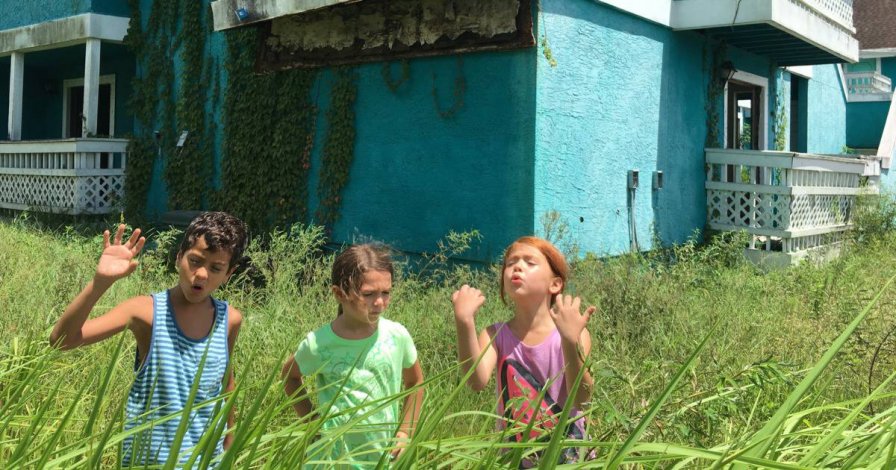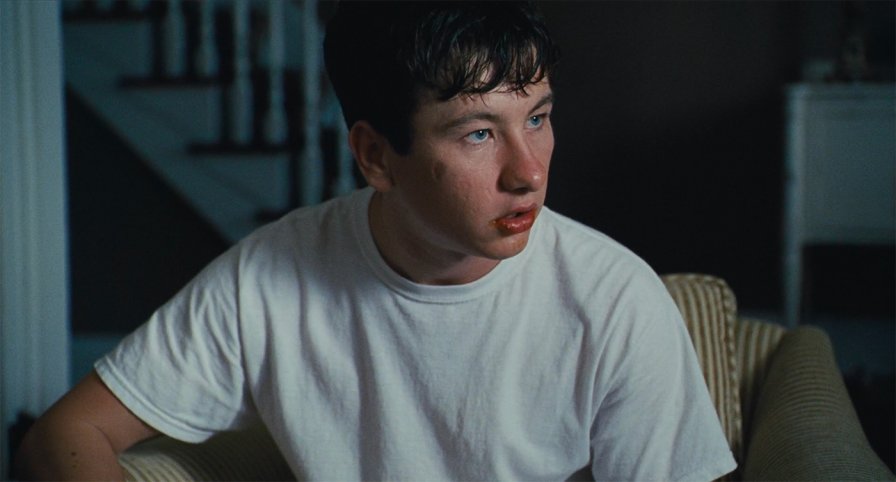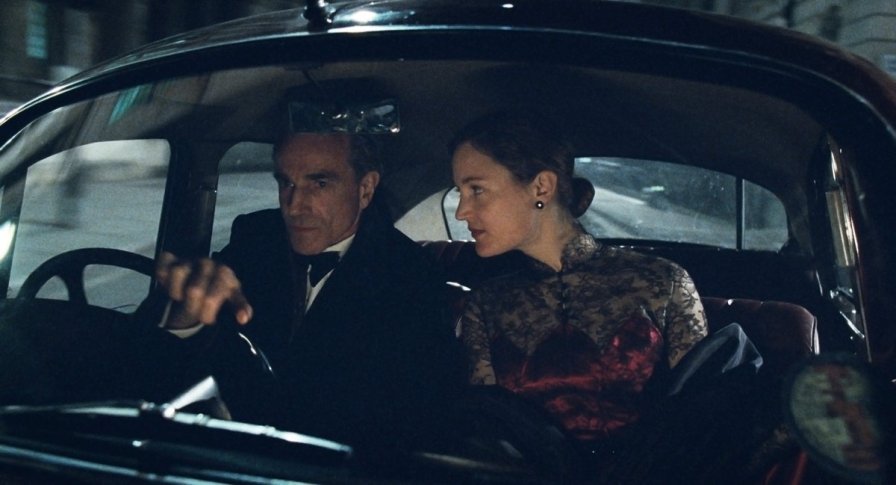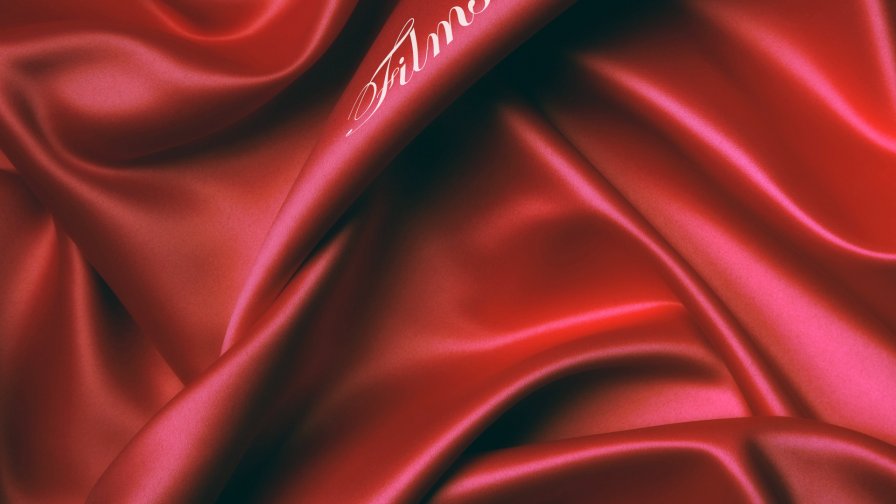Welcome to Screen Week! Join us as we explore the films, TV shows, and video games that kept us staring at screens. More from this series
10
Raw
Dir. Julia Ducournau
[Focus World]

Raw, the first feature film by writer/director Julia Ducournau, told the story of Justine (Garance Marillier), a young vegetarian forced to eat meat during a hazing ritual at veterinary school. From there, Justine developed an insatiable taste for other types of meat, including — you guessed it — human. But Raw never felt like schlocky exploitation. It was like Cronenberg doing a coming-of-age story, like Haneke exploring sexual awakening. After the film’s first half built subtly and meticulously to its inevitable climax, the second half shifted to an incredibly articulate exploration of the complex dynamics of sibling relationships. This would not have been possible without the dueling performances of Marillier and Ella Rumpf, who were alternately menacing and endearing. Cannibalism, body horror, New French Extremity – these weren’t new concepts, but Ducournau employed them sparingly and interestingly enough to keep the film engaging and unsettling. Raw was an accomplishment, a film that was gross, funny, sexy, and unnerving, but most of all cohesive. It never felt like it bit off more than it could chew.
09
Blade Runner 2049
Dir. Denis Villeneuve
[Warner Bros.]

It’s unfair and ultimately pointless to demand that artforms defend their existence — but it sure can be a lot of fun. Pretending we’re assholes for a moment: if we were to put this kind of onus on film, what would it have to say for itself? What facet germane to this particular mode of expression is compelling enough to delineate cinema from theater or from literature? While spectacular optics spring immediately to mind, the locus of a film’s singular gravity lies squarely within its ability to impart tone. Cinema can exude this stuff like no other, and here at TMT we always perk up when someone releases a film that is almost entirely bound up with tone. Blade Runner 2049 was so thoroughly imbued with atmosphere it beleaguered the senses, and we demanded repeat viewings just to make sure we could take it all in. All that being said, what made this movie so uncomfortable for us was its underlying theme of parentage. Every significant action in this film was driven by a desire to have been wanted/birthed by something with a vested interest in you thriving outside of the womb, artificial or otherwise. The entirely visceral grounding of this altogether virtual story was what made it equal parts terrible and sublime. It’s probably a long shot to dream that Villeneuve will make another entry into the canon of Scott’s dystopian franchise, but even androids can dream. OH COME ON LET ME HAVE THIS ONE JOKE.
08
The Shape of Water
Dir. Guillermo del Toro
[Double Dare You]

Like a dream like a miracle: in winter, we walk on water. There’s an ice and a concrete and in between, the semi-melted universe, the drops and beads and lines of dreams. The sole can kiss these shapes. A kiss can send the once ice running away or induce a rushing back to hug my print. On water like in dreams, we try not to slip. We try not to fall. The miracle of water is how it welcomes bodies; the shape of water is the motion of care. Like a dream like a miracle, The Shape of Water lives in betweens, a dream of caring to care. A fable of connecting and keeping tight hold of what keeps us whole and healthy, The Shape of Water was Guillermo del Toro’s cool balm on cinema’s lips, the thaw of “emotion is the new punk.” Every life begs care. A dancer testifies, an artist yearns, a scientist testifies, a God loves like man and a man makes himself monster. “I speak your name in my every prayer,” the film promised, and we, bonded like hydrogen, spread around its edges to sip love like water. Like a myth’s memory or a half-thawed poem, The Shape of Water let us live in its love like a dream, like a miracle. We slip, we fall, we sink. We love.
07
mother!
Dir. Darren Aronofsky
[Paramount]

Darren Aronofsky’s thrilling and divisive seventh feature was many things: a Biblical allegory, an environmental screed, an artist’s mea culpa, a comedy of manners, a horror film of intrusion. Most of all, however, it was something that simply doesn’t exist in Hollywood anymore: a mid-budget film in wide release from a major studio, written and directed by a name filmmaker and starring A-list performers, with the gall to be absolutely unabashedly capital-B Bonkers. Give credit to Paramount for putting its money and weight behind what was clearly destined to be one of the most polarizing films of the year. Marrying the aesthetic of Black Swan with the thematic concerns of Noah, mother! was a richly polyvalent and thoroughly metamodern cinematic text that, like The Fountain before it, boldly recombined elements of Judeo-Christian, Mayan, Buddhist, pantheistic, and other mythologies into something that, in its own words, “means something different to everyone.” Aronofsky may have elucidated his intention to tell the story of Gaia as suffering housewife, but that doesn’t mean mother! did not also reflect, consciously or subconsciously, Aronofsky’s perspectives on art, fame, ego, or obsession. A daring, singular achievement from one of our most exciting filmmakers.
06
The Florida Project
Dir. Sean Baker
[A24]

The most important and growingly essential takeaway here is that we take the pressure of message off of a narrative. Strong characters and a strong story are message enough, and are suited to deliver it in a richer, more memorable way. In a largely dismal cinematic year littered with self-satisfied sourness and condescending inanity, The Florida Project’s raw character study was a much-needed blast of AC. Despite the exclusive use of direct cinema style, the film worked like a Gravity-caliber transportive experience. The brisk pacing and vivid milieu of Moonee’s free-roaming, learnedly unscrupulous perspective was so harrowingly and idyllically immersive that one could forget Jesus was there, just barely keeping the whole hot-pink flamingo and pedo-flanked motel ecosystem from falling apart. He and his relatively amateur co-stars managed to both stay out of their own way and keep their fast-deflating balloon scenario aloft. They went with an escapist ending, sure. But, appropriately, it felt like one that Moonee and her friend could’ve chosen: that leap just over the chasm, when we thought all hope was lost. In this pastel hell, no friend to conventional wisdom, we looked down — senses flooding — and took it all in.
05
The Killing of a Sacred Deer
Dir. Yorgos Lanthimos
[A24]

When Barry Keoghan (Martin) auditioned for The Killing of a Sacred Deer, he said director Yorgos Lanthimos had him bounce a tennis ball off the wall and repeat phrases from the script so the natural emotional response to the meaning of the words spoken would dissolve. On paper, this seems counterintuitive for a movie about — to name just a handful — death, guilt, revenge, justice, fate, acceptance, and sacrifice. But when a movie’s most memorable scenes — and we mean this in the best way — consist of an epiphany about eating spaghetti, the awkward gifting of a pocket knife, comparing body hair growth, refusing to let one leave until they’ve tried the tart, or making sure the plants were watered even while bedridden and bleeding from the eyes, we know we’re watching something special. Full of contradictions that shouldn’t have worked but did so especially well, Lanthimos gave us what was essentially an adaptation of the Greek myth of Iphigenia in the guise of a thriller wrapped up in a black comedy. Leave it to Lanthimos to make a story that’s thousands of years old feel not only relevant to our lives, but new.
04
Lady Bird
Dir. Greta Gerwig
[A24]

I threw myself into bed while on the phone with my best friend after seeing Lady Bird for a third time, saying, or screaming, “I just think Lady Bird is an insanely generous movie.” What I mean is what Sister Sarah Joan asks while talking with Lady Bird about her college essay. “Don’t you think maybe they are the same thing? Love and attention?” I mean how wildly and obsessively Lady Bird has decorated her room. Handmade flyers and riot grrrl ephemera. The bright white sneakers Julie wears. How she tells Lady Bird that some people aren’t born happy while crying on prom night. The ribbon Jenna wears tied in her ponytail. The moment Lady Bird glances into Kyle’s living room and sees his dad sick and passed out on a Sunday afternoon. How Lady Bird’s mom stays awake until god knows when sewing a Thanksgiving dress. Like Shelly says, she has a big heart. I think Greta Gerwig does too. She gave each character room to be complicated. Room to fight and forgive and cry and yell joyfully. Room to be messy, room to be everything. This is why I saw Lady Bird so many times: it was generous, sensitive, and so deeply, beautifully human.
03
Good Time
Dir. Josh Safdie and Benny Safdie
[A24]

As it turns out, nobody had a good time in the Safdie brothers’ latest film. Their New York was one of back alleys and dimly lit public buildings, a claustrophobic playground for the city’s petty criminals and collaterally damaged bystanders. But what separated Good Time from boilerplate “murky” crime dramas was an inescapable, lingering tension in the air, deployed almost straight from the off. From the bail bonds shop to a theme park by night, moral ambivalence quickly atrophied into outright depravity as Connie (adroitly played by Robert Pattinson) attempted to free his brother Nick (co-director Benny) by any, and every, means that his deranged mind could muster. In a breathless chain of events, the pure and the damned were entangled in his sadistic schemes; robbery, kidnapping, beating, and drugging a security guard until he was reduced to a babbling corpse. For the breadth of cinematic detail here, the Safdies never lost sight of the terse, gritty action necessary to undergird it all. Perhaps I am mistaken; by the film’s relatively serene denouement, it seemed like a good time was had by observing the wreckage.
02
Get Out
Dir. Jordan Peele
[Universal]

“‘Get Out’ is a documentary.”
– Jordan Peele
“If I could, I would have voted for Obama for a third term.”
– Bradley Whitford as Dean Armitage
It’s not so much argument as it is fact: Hollywood’s productions have seen drastic improvements, as they have more and more embraced the voices of young, black writers/actors. Get Out was a blazing emblem of this truth. Jordan Peele’s debut played — as so many terrifying classics do — off commonplace social norms and strata. But this masterwork took dry, poignant jabs at the audience for even noticing its swarming gags. Did you just laugh at that? Why? You chewed your nails at the sight of that police car? How come? Each character drawn in this antagonizing portrait of white malevolence embodied a different facet of a real-life white supremacist world, wherein the most soft-spoken and faux-well-meaning are the most nightmarish. Get Out’s stunning acumen reflected a reality scarier for us all, even scarier than the movie itself. And that’s saying something.
01
Phantom Thread
Dir. Paul Thomas Anderson
[Focus Features]

In a year wherein bad punditry became the house style of American life, Phantom Thread was a sublime tonic, a reminder that even our most transparent interactions are freighted with consequence, ripe for misinterpretation, and inevitably shrouded in mystery. Much of Paul Thomas Anderson’s film was confined to a single set — the luxurious yet cramped ivory-toned confines of the dressmakers of London’s House of Woodcock — and it was defined by the uncanny, cosmic distance that prevails even among those in the throes of obsessive love. In the most chaste but strangely sexy and undeniably kinky of ways, Phantom Thread charted a path out of the madness love and ambition impose upon us. How do you find comfort and safety in a person you can never know completely? To borrow a phrase by Lesley Manville’s Cyril Woodcock, “The answer to the question is sincerity.”
Phantom Thread was dizzyingly rich on a technical level. Jonny Greenwood’s sprawling score was a dexterous marvel, drunk on Debussy and Guaraldi and flaring with stray notes of dissonance. Anderson’s photography had a similar mix of grandeur and grace, as it peered up spiral staircases and, in one dazzling flourish, circled a dress by Daniel Day-Lewis’s Reynolds Woodcock with a reverent air of surgical quietude. The film was set in the 1950s, but it looked like a product of the heyday of Merchant Ivory Productions: its colors and textured were muted but ravishing, its fabrics and furnitures extraordinarily tactile, its fireplaces crackling and casting the most loving glow on Vicky Krieps’s Alma, the young waitress and blushing ingenue who disrupted and then consecrated the fussy routines and exacting manners of the House of Woodcock. Reynolds’s constant cravings for concentration and solitude were undermined by some truly hilarious foley work, which transformed the scrape of a knife on a piece of toast into an affront of seismic proportions.
Every element of Phantom Thread’s production served to enhance its characters, and Alma, Reynolds, and Cyril were incandescent creations, three poles of equal significance in a love triangle as thrilling as it was deeply weird. The result — something like a chamber drama that doubled as a screwball comedy bedecked with elegant fashions and bountiful platters of pastries — was an expansive discourse on creation that also had a fetish for breakfast and an alternately comic and tragic air of impending doom. It was at once totally concise as a study of how to make a life out of the things and the people you love, and utterly inexhaustible as a scrutiny of the constantly shifting power dynamics innate in being your true self while attempting to live with the people you owe your identity to.
While the film was full of games, confrontations, and ultimatums, every divine utterance in Anderson’s screenplay (“There’s an air of quiet death in this house, and I do not like the way it smells.”) seemed to emerge from a place of utmost sincerity. This is what made the film so beguiling. Like a Hitchcock film, Phantom Thread was endlessly rewatchable, impeccably designed to be approached from the perspective of any of its major characters: the fussbucket designer, his ambitious and feisty new lover, or his imperious yet disarmingly tender sister and business partner. And like a Nabokov novel, it was both playful and not a little transgressive in its attempts to capture the sparks and vibrations that define our passions and obsessions. Alongside the works of those titans, we’ll be excavating new truths and mysteries out of it for decades to come. I’m not sure if Phantom Thread is Paul Thomas Anderson’s best film, but I’m certain it’s his most perfect one.
Welcome to Screen Week! Join us as we explore the films, TV shows, and video games that kept us staring at screens. More from this series
